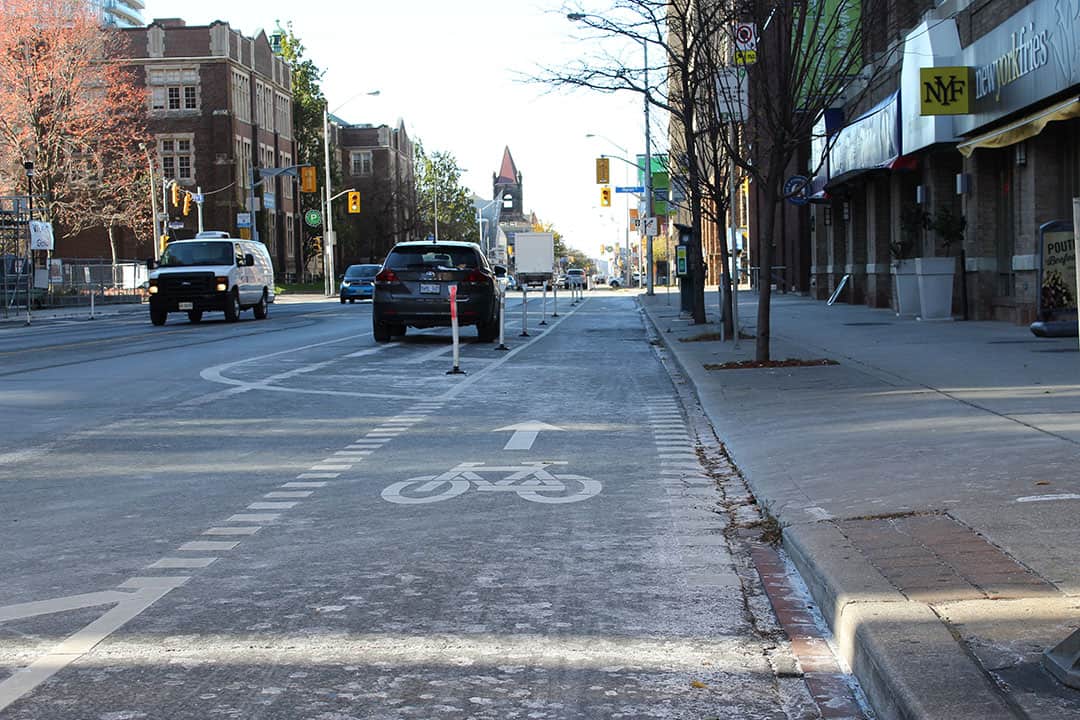On November 7, the Toronto City Council voted to maintain the bike lanes on Bloor Street, with 36 in favour and six against. This follows a year long Bloor Street Bike Lane project to make the lanes permanent.
Last month, the city staff released a report that the bike lanes had reached their goal of improving the safety of cyclists, increasing the amount of people who cycle, and reduced the inconvenience of cyclists to other road users. There was no major increase in travel time for motor vehicles along the streets where the bike lanes were implemented.
The bike lanes themselves stretch 2.4 kilometres along Bloor, from Shaw Street to Avenue Road. Toronto Transportation Services General Manager Barbara Grey said the pilot came out of a 10 year cycling plan.
“We worked very closely with the BIA’s, the business community, the adjacent communities through a series of public consultations, to come up with the design that we ultimately implemented through the term of the one year pilot,” said Grey.
In the first year of the project, there was a 56 per cent increase of cyclists on Bloor Street, 25 per cent of which were new cyclists. Bloor Street now has the second-highest volume of cyclists in the city as a result of the pilot project.
The project also saw a 71 per cent decrease in motorized vehicle conflicts, a 61 per cent decrease in conflicts between cyclists and motorized vehicles, and a 55 per cent decrease in conflicts between pedestrians and motorized vehicles.
There was, however, a 61 per cent increase in cyclist and pedestrian conflicts. Overall, the project increased the overall safety of drivers, cyclists, and pedestrians with a 44 per cent decrease in total road conflicts.
During the City Council meeting, there was also discussion of an expansion plan in the works, in 2019 or beyond. This would expand the bike lanes westbound, following the pilot project. There is also an expansion project underway to move the bike lanes eastward.
“One of the things we’re most excited about with Bloor Street is that when you have people who can safely choose to cycle then they’re not driving in [congested traffic],” said Grey.


